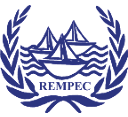
Fuel leakage into the Mediterranean Sea from the Baniyas thermal station, Syria

What we know about the incident
Date and Time of the spill: Last Monday, 23rd August, 1 pm (UTC+3)
Source and Quantity:
A leak occurred from one of the fuel tanks at the Baniyas thermal station as a result of cracks and wear that led to the leakage of fuel into the sea. According to the Syrian competent authorities, the damaged tank, contained 12,000 m3 of fuel, out of which an amount yet to be confirmed was pumped into nearby reservoirs. Part of the fuel was contained whilst the rest leaked into the sea.
Oil spill evolution and forecast:
REMPEC activated The Mediterranean Operational Network for the Global Ocean Observing System (MONGOOS), member of the Mediterranean Assistance Unit. The models and predictions have been consistent with the satellite images acquired by MONGOOS:
On 25–27 August, the spill drifted to the North-North West.
On 28 August,
The forefront of the slick was composed of the eroded oil sheen that washed off the coastline of the Peninsula of Latakia. This part dispersed to the West and to the North. The tail of the spill continued beaching, mainly in the Latakia area.
On 29–30 August,
The forefront of the slick drifted to the West, stretching in the form of semi-ellipse along the NE–SW axis. The tail connecting the forefront with the area of Latakia narrowed.
On 31 August – 1 September,
The forefront of the slick is expected to reach the northern part of the Cypriot island, where a thin layer of oil has been observed. The first beaching was expected on 31 August 2021 01:00 UTC, according to the model and is yet to be confirmed.
The isolated part of the slick, near Banias, is expected to continue polluting the coastlines from Banias to Jablah.
Oil mass balance shows:
According to the models, 40% of the initial oil mass evaporated by 27 August; 14 % was drifting on the sea surface as of 31 August, and 44% was on the Syrian shoreline. The natural dispersion of the oil in the water column was negligible.
Response to the incident: a brief timeline
On Wednesday 25th August
- REMPEC was informed about the incident by the Syrian competent authorities
- The Syrian authorities informed REMPEC that cleaning operations were undertaken on the affected areas with limited capacity and requested assistance to REMPEC to support the response operations
- REMPEC activated the Mediterranean Operational Network for the Global Ocean Observing System (MONGOOS), member of the Mediterranean Assistance Unit (MAU) for the provision of regular simulation and prediction of the movement of the spill.
- Since then, REMPEC has been continuously in contact with the Syrian competent authority (Director of Environmental Safety Directorate, Ministry of Local Administration and Environment)
On Friday 27 August 2021
- REMPEC notified the incident to the neighboring countries, i.e. Cyprus, Israel, Lebanon and Turkey and provided regular forecast updates.
On Monday 30 August 2021
- A crisis management meeting was organized and attended by representatives of the Ministry of Local Administration and Environment, UNEP/West Asia, UNEP/MAP, IMO and REMPEC. The objectives of the meeting were to obtain updated information on the pollution, the impacted areas, measures undertaken by the Syrian Government and REMPEC and to define the course of action.
- REMPEC has been in contact with Cyprus and Turkey to assess the situation, ascertain the arrival of oil on the Cypriot island, take stock of the preventive measure undertaken by the individual coastal States, and endeavor coordination of efforts
- Cyprus mobilised the EMSA vessel “Alexandria”, and requested REMPEC to notify Greece and Israel about the potential activation of the Sub-regional Marine Oil Pollution Contingency Plan between Cyprus, Greece and Israel, subject to the evolution of the situation, within the next days. The said plan was developed with the support of REMPEC and signed in May 2018.
Next steps
The meeting held on 30 August with the Syrian authorities defined the following next steps including:
- the possible mobilisation in Syria a of an expert of the Mediterranean Assistance Unit (MAU) to assess the situation along the affected coastline, identify the most appropriate response techniques at sea and onshore, and to define the need in terms of means and personal,
- Assess the need for assistance from Contracting Parties to the Barcelona Convention,
- Remote assistance to provide technical advice and trainings to local personnel,
- Support Cyprus and Turkey as required,
According to the mandate of REMPEC, one of its tasks consist in assisting coastal States in the Mediterranean region who request emergency assistance, either directly or via other regions, as well as securing assistance from other Parties, who are close to their region or from outside their region.
Earlier this year, REMPEC provided assistance to Lebanon in the context of the pollution which affected both Israel and Lebanon.
Source : REMPEC

